Long Zhuo
Vchitect-2.0: Parallel Transformer for Scaling Up Video Diffusion Models
Jan 14, 2025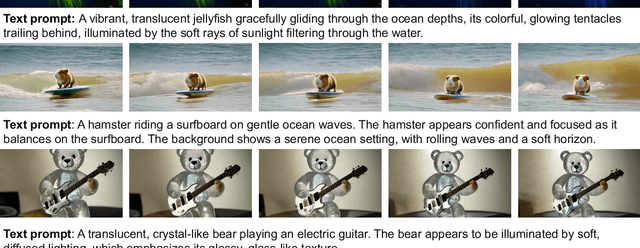
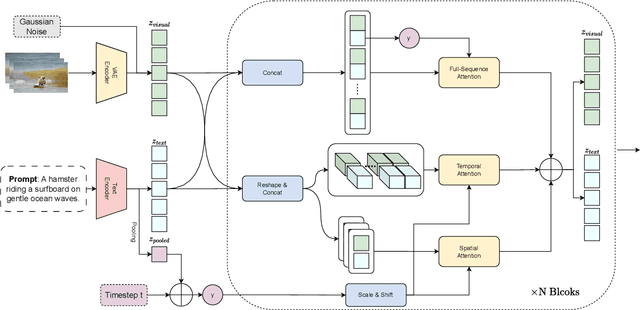

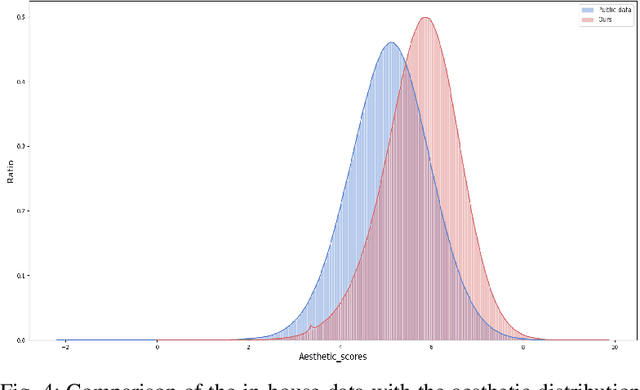
Abstract:We present Vchitect-2.0, a parallel transformer architecture designed to scale up video diffusion models for large-scale text-to-video generation. The overall Vchitect-2.0 system has several key designs. (1) By introducing a novel Multimodal Diffusion Block, our approach achieves consistent alignment between text descriptions and generated video frames, while maintaining temporal coherence across sequences. (2) To overcome memory and computational bottlenecks, we propose a Memory-efficient Training framework that incorporates hybrid parallelism and other memory reduction techniques, enabling efficient training of long video sequences on distributed systems. (3) Additionally, our enhanced data processing pipeline ensures the creation of Vchitect T2V DataVerse, a high-quality million-scale training dataset through rigorous annotation and aesthetic evaluation. Extensive benchmarking demonstrates that Vchitect-2.0 outperforms existing methods in video quality, training efficiency, and scalability, serving as a suitable base for high-fidelity video generation.
Evading Detection Actively: Toward Anti-Forensics against Forgery Localization
Oct 16, 2023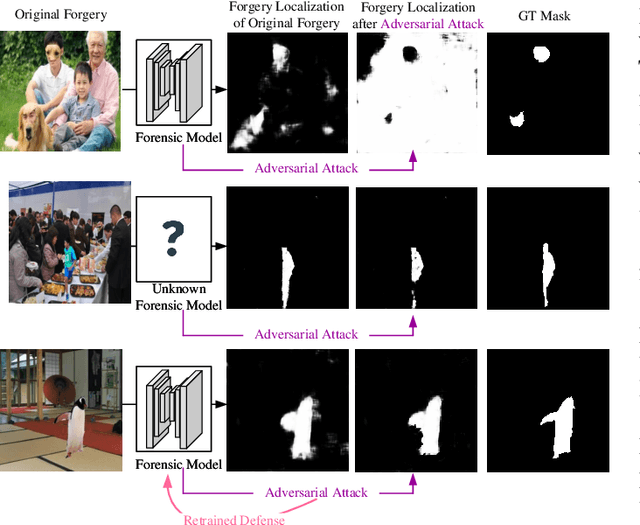
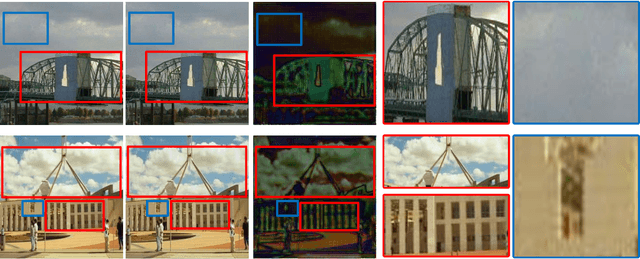
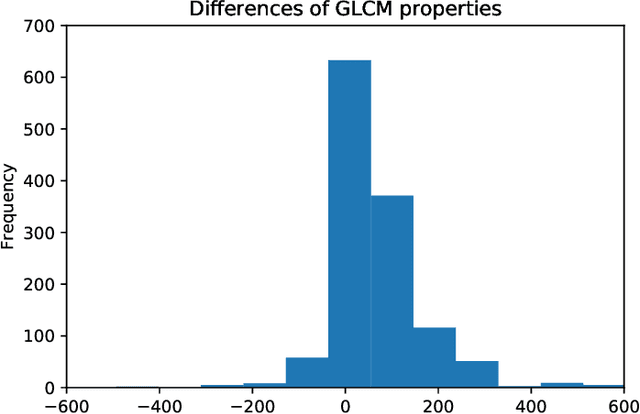
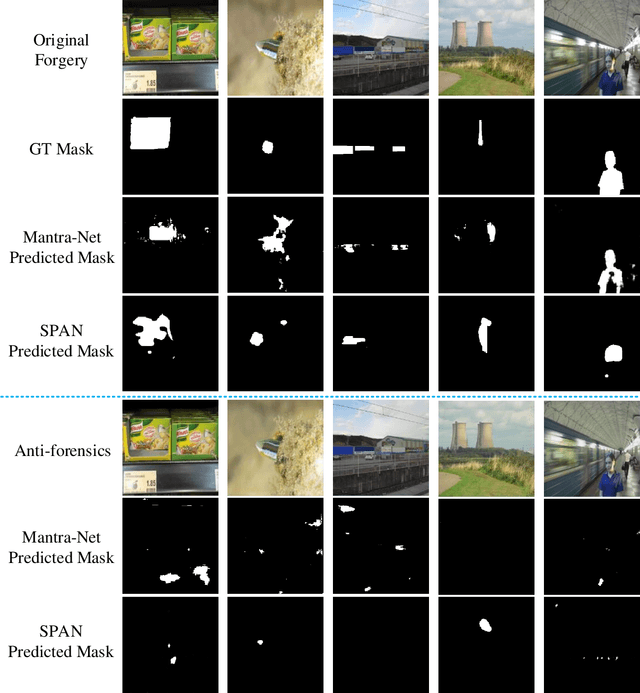
Abstract:Anti-forensics seeks to eliminate or conceal traces of tampering artifacts. Typically, anti-forensic methods are designed to deceive binary detectors and persuade them to misjudge the authenticity of an image. However, to the best of our knowledge, no attempts have been made to deceive forgery detectors at the pixel level and mis-locate forged regions. Traditional adversarial attack methods cannot be directly used against forgery localization due to the following defects: 1) they tend to just naively induce the target forensic models to flip their pixel-level pristine or forged decisions; 2) their anti-forensics performance tends to be severely degraded when faced with the unseen forensic models; 3) they lose validity once the target forensic models are retrained with the anti-forensics images generated by them. To tackle the three defects, we propose SEAR (Self-supErvised Anti-foRensics), a novel self-supervised and adversarial training algorithm that effectively trains deep-learning anti-forensic models against forgery localization. SEAR sets a pretext task to reconstruct perturbation for self-supervised learning. In adversarial training, SEAR employs a forgery localization model as a supervisor to explore tampering features and constructs a deep-learning concealer to erase corresponding traces. We have conducted largescale experiments across diverse datasets. The experimental results demonstrate that, through the combination of self-supervised learning and adversarial learning, SEAR successfully deceives the state-of-the-art forgery localization methods, as well as tackle the three defects regarding traditional adversarial attack methods mentioned above.
RenderMe-360: A Large Digital Asset Library and Benchmarks Towards High-fidelity Head Avatars
May 22, 2023Abstract:Synthesizing high-fidelity head avatars is a central problem for computer vision and graphics. While head avatar synthesis algorithms have advanced rapidly, the best ones still face great obstacles in real-world scenarios. One of the vital causes is inadequate datasets -- 1) current public datasets can only support researchers to explore high-fidelity head avatars in one or two task directions; 2) these datasets usually contain digital head assets with limited data volume, and narrow distribution over different attributes. In this paper, we present RenderMe-360, a comprehensive 4D human head dataset to drive advance in head avatar research. It contains massive data assets, with 243+ million complete head frames, and over 800k video sequences from 500 different identities captured by synchronized multi-view cameras at 30 FPS. It is a large-scale digital library for head avatars with three key attributes: 1) High Fidelity: all subjects are captured by 60 synchronized, high-resolution 2K cameras in 360 degrees. 2) High Diversity: The collected subjects vary from different ages, eras, ethnicities, and cultures, providing abundant materials with distinctive styles in appearance and geometry. Moreover, each subject is asked to perform various motions, such as expressions and head rotations, which further extend the richness of assets. 3) Rich Annotations: we provide annotations with different granularities: cameras' parameters, matting, scan, 2D/3D facial landmarks, FLAME fitting, and text description. Based on the dataset, we build a comprehensive benchmark for head avatar research, with 16 state-of-the-art methods performed on five main tasks: novel view synthesis, novel expression synthesis, hair rendering, hair editing, and talking head generation. Our experiments uncover the strengths and weaknesses of current methods. RenderMe-360 opens the door for future exploration in head avatars.
Fast-Vid2Vid: Spatial-Temporal Compression for Video-to-Video Synthesis
Jul 11, 2022



Abstract:Video-to-Video synthesis (Vid2Vid) has achieved remarkable results in generating a photo-realistic video from a sequence of semantic maps. However, this pipeline suffers from high computational cost and long inference latency, which largely depends on two essential factors: 1) network architecture parameters, 2) sequential data stream. Recently, the parameters of image-based generative models have been significantly compressed via more efficient network architectures. Nevertheless, existing methods mainly focus on slimming network architectures and ignore the size of the sequential data stream. Moreover, due to the lack of temporal coherence, image-based compression is not sufficient for the compression of the video task. In this paper, we present a spatial-temporal compression framework, \textbf{Fast-Vid2Vid}, which focuses on data aspects of generative models. It makes the first attempt at time dimension to reduce computational resources and accelerate inference. Specifically, we compress the input data stream spatially and reduce the temporal redundancy. After the proposed spatial-temporal knowledge distillation, our model can synthesize key-frames using the low-resolution data stream. Finally, Fast-Vid2Vid interpolates intermediate frames by motion compensation with slight latency. On standard benchmarks, Fast-Vid2Vid achieves around real-time performance as 20 FPS and saves around 8x computational cost on a single V100 GPU.
Self-Adversarial Training incorporating Forgery Attention for Image Forgery Localization
Jul 06, 2021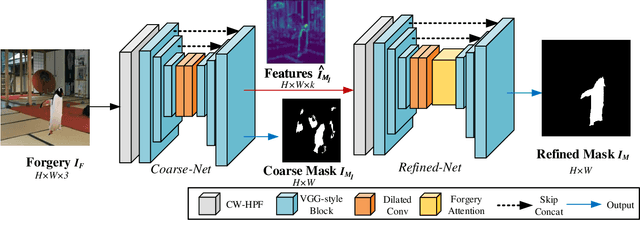
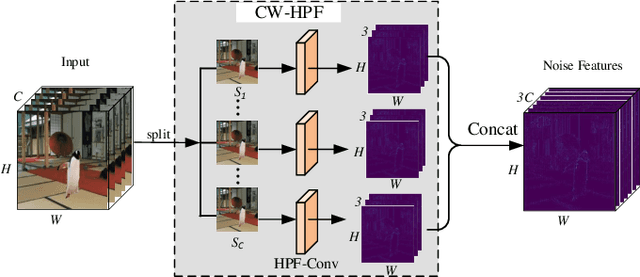
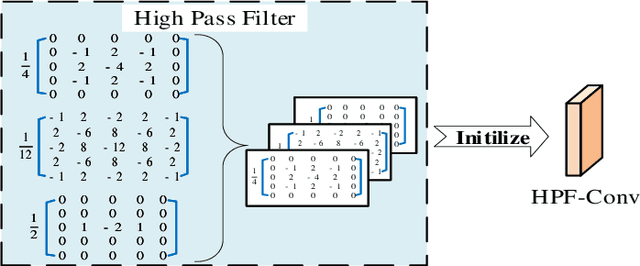
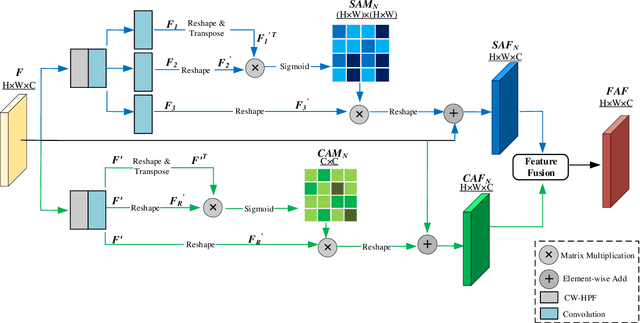
Abstract:Image editing techniques enable people to modify the content of an image without leaving visual traces and thus may cause serious security risks. Hence the detection and localization of these forgeries become quite necessary and challenging. Furthermore, unlike other tasks with extensive data, there is usually a lack of annotated forged images for training due to annotation difficulties. In this paper, we propose a self-adversarial training strategy and a reliable coarse-to-fine network that utilizes a self-attention mechanism to localize forged regions in forgery images. The self-attention module is based on a Channel-Wise High Pass Filter block (CW-HPF). CW-HPF leverages inter-channel relationships of features and extracts noise features by high pass filters. Based on the CW-HPF, a self-attention mechanism, called forgery attention, is proposed to capture rich contextual dependencies of intrinsic inconsistency extracted from tampered regions. Specifically, we append two types of attention modules on top of CW-HPF respectively to model internal interdependencies in spatial dimension and external dependencies among channels. We exploit a coarse-to-fine network to enhance the noise inconsistency between original and tampered regions. More importantly, to address the issue of insufficient training data, we design a self-adversarial training strategy that expands training data dynamically to achieve more robust performance. Specifically, in each training iteration, we perform adversarial attacks against our network to generate adversarial examples and train our model on them. Extensive experimental results demonstrate that our proposed algorithm steadily outperforms state-of-the-art methods by a clear margin in different benchmark datasets.
 Add to Chrome
Add to Chrome Add to Firefox
Add to Firefox Add to Edge
Add to Edge